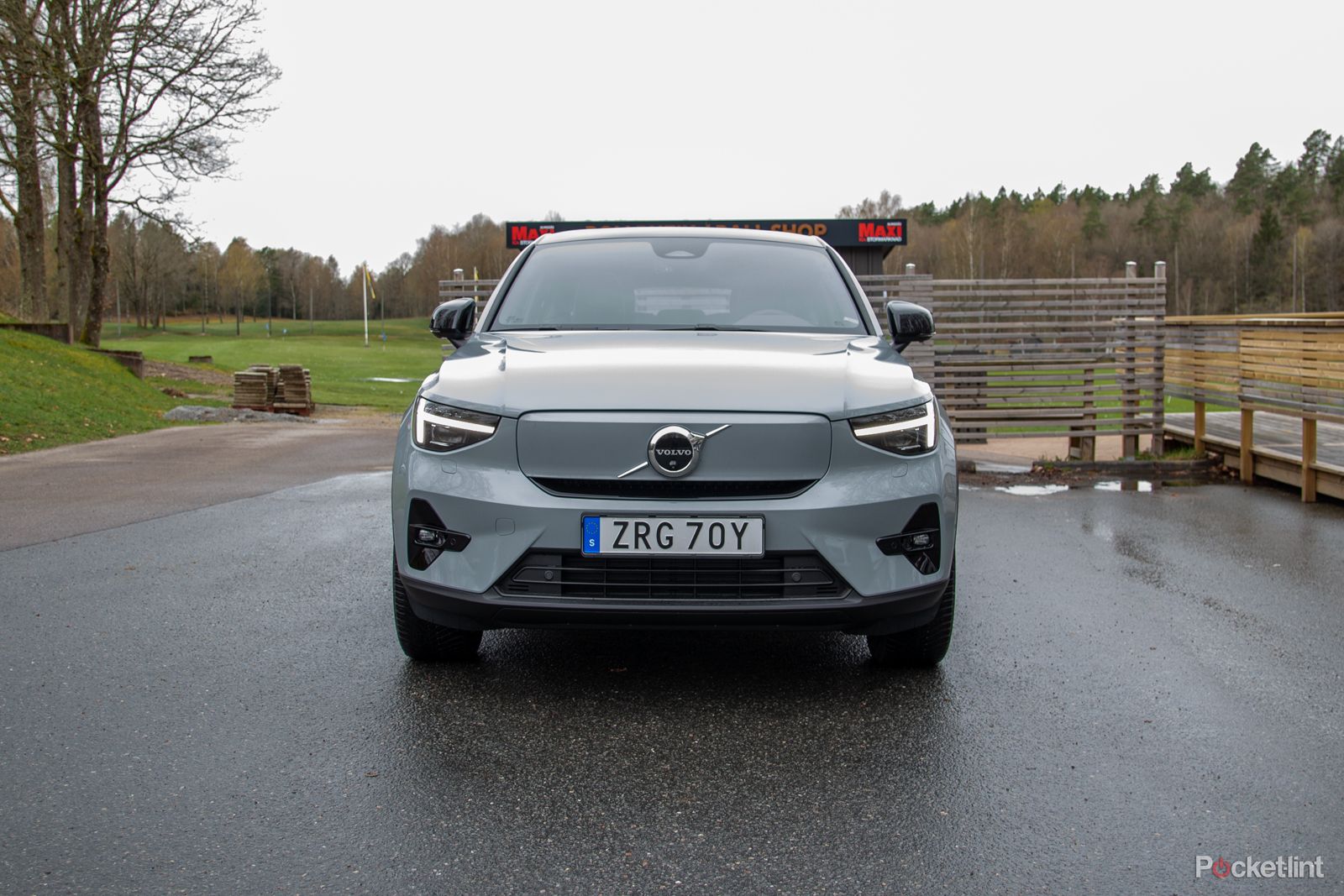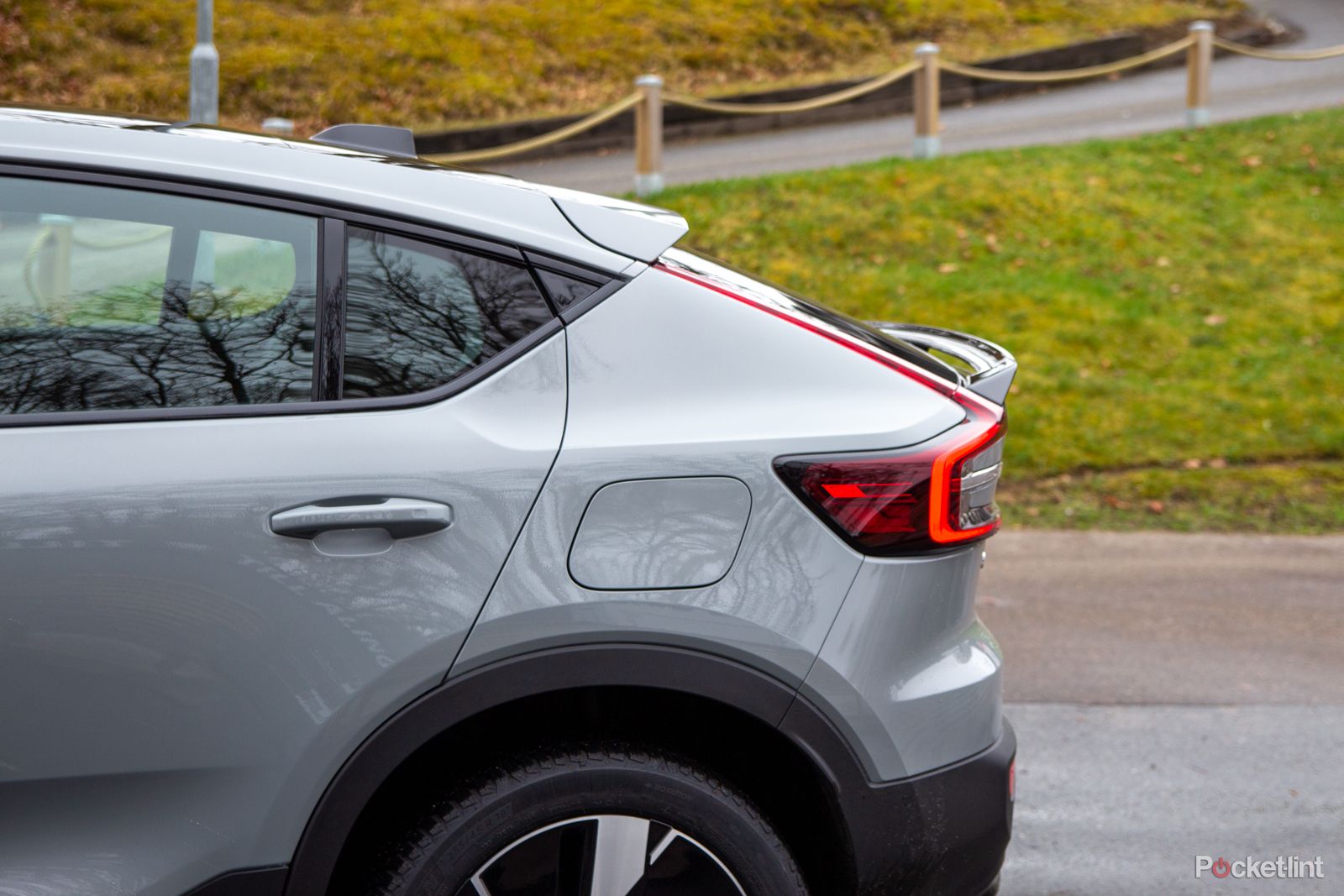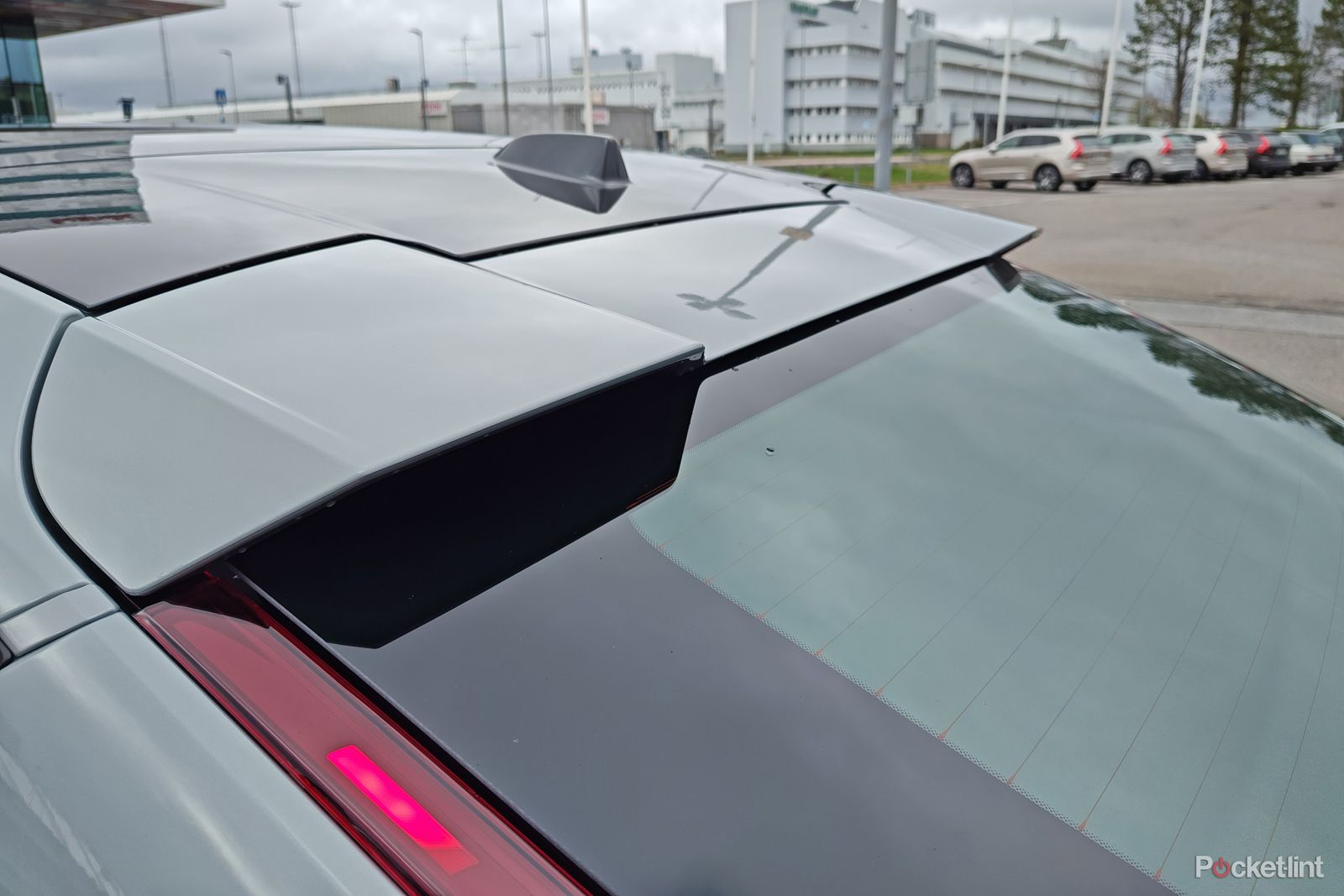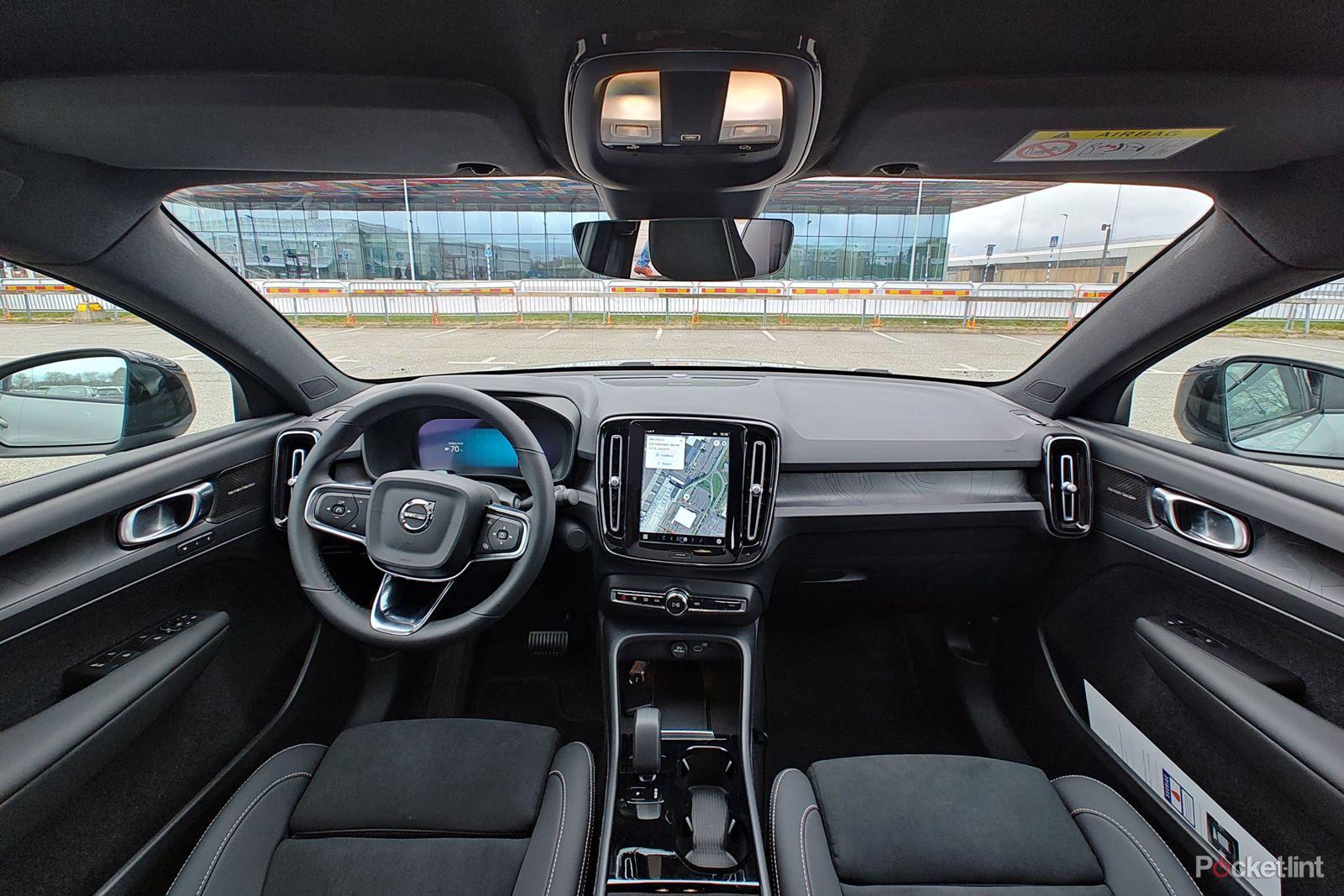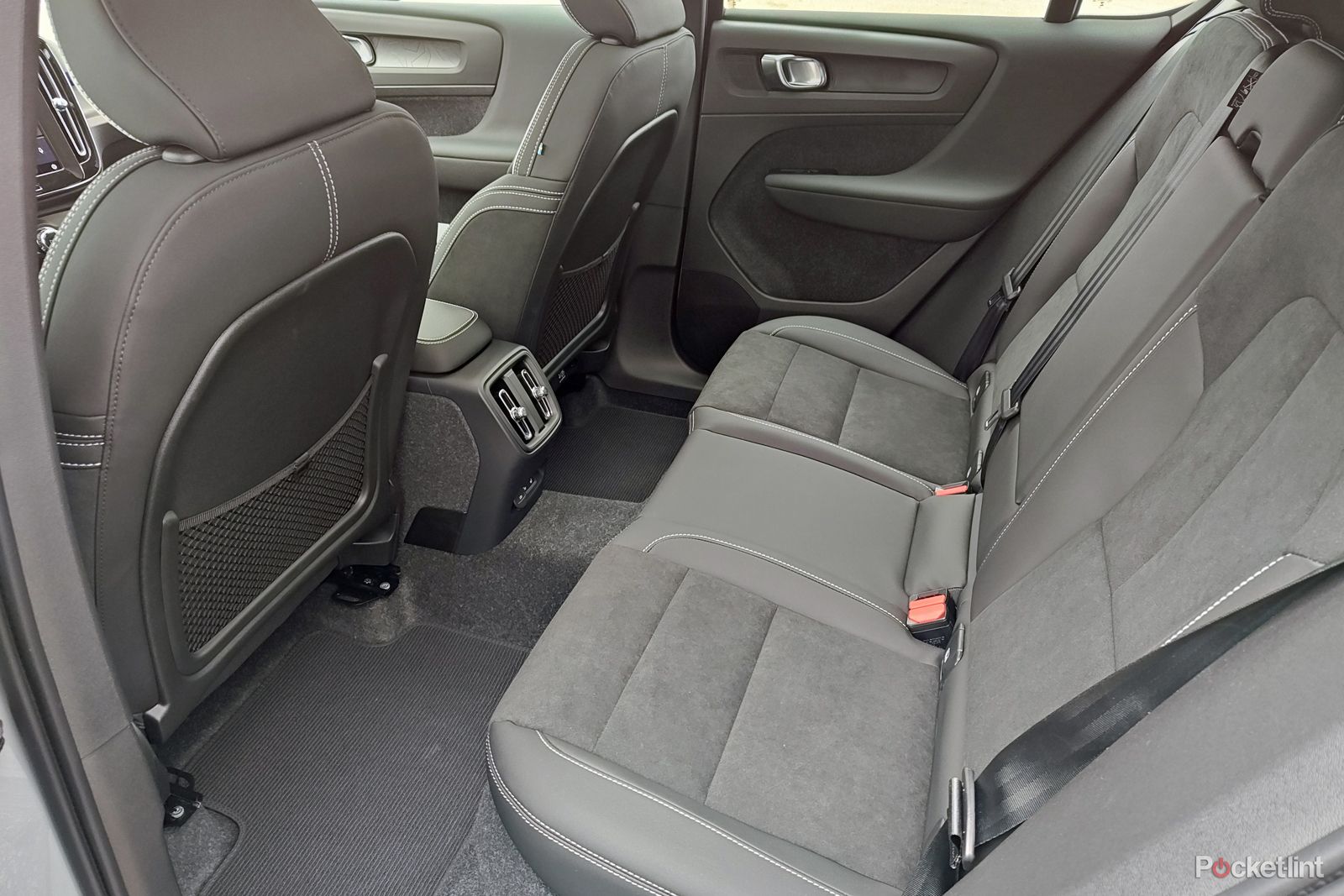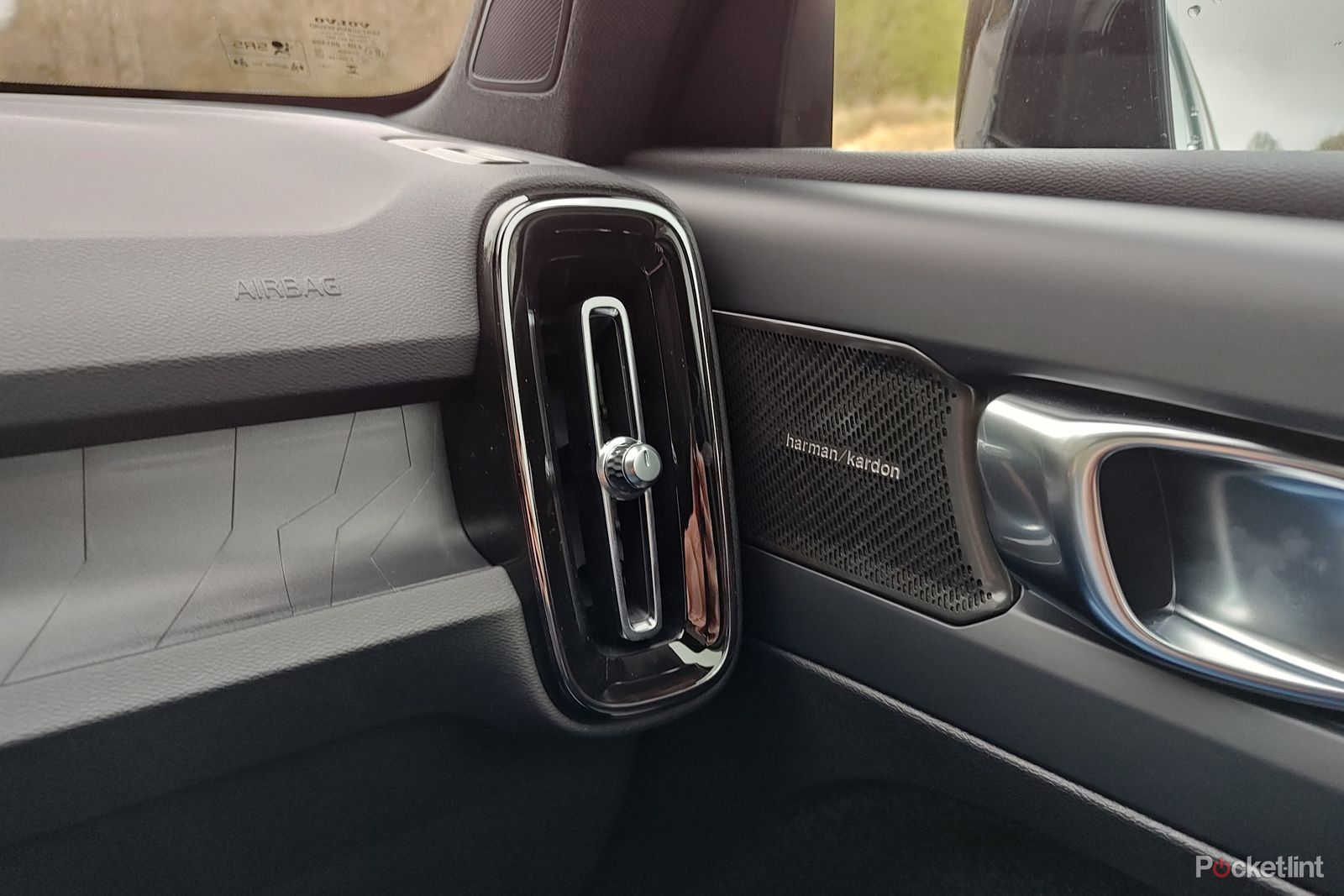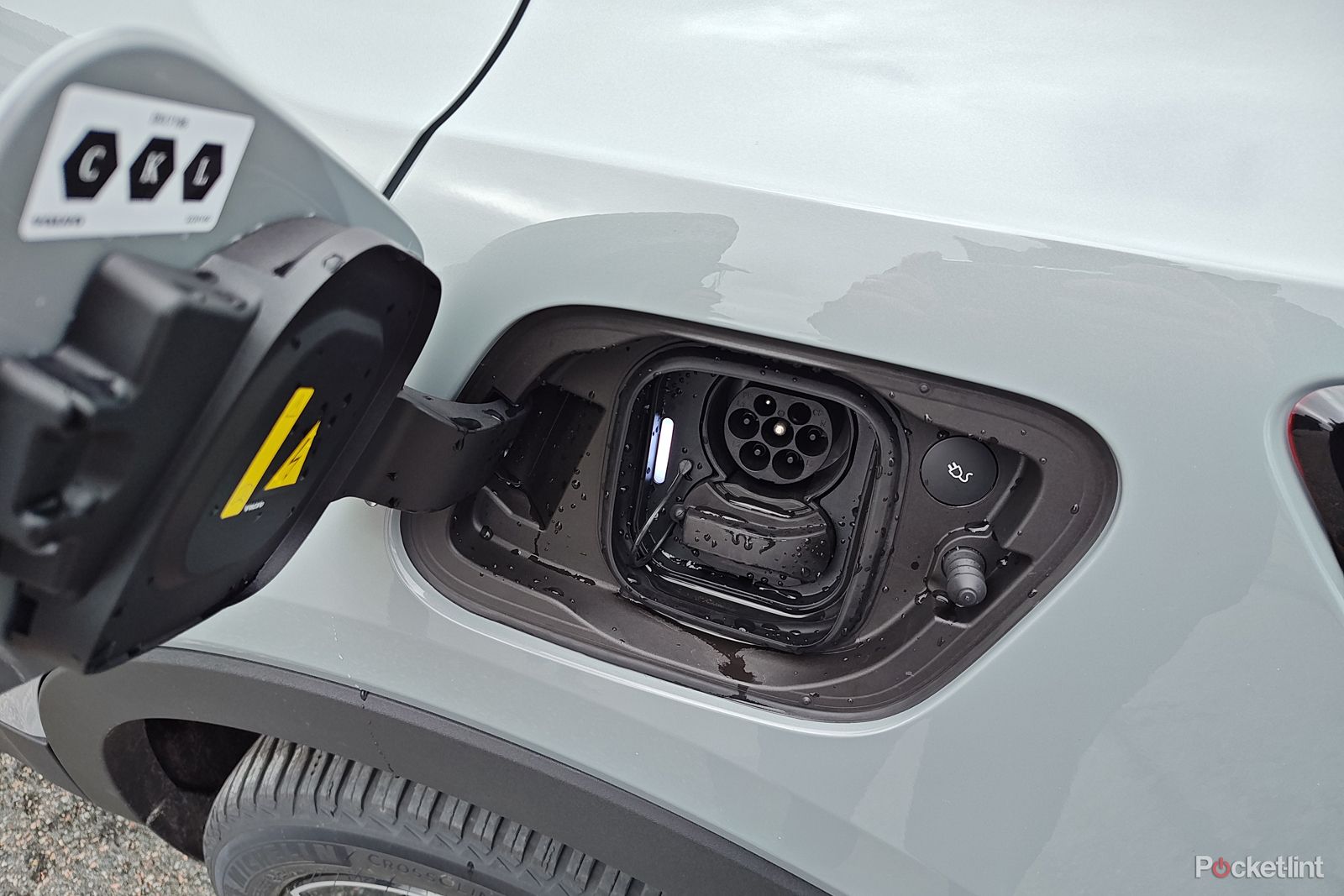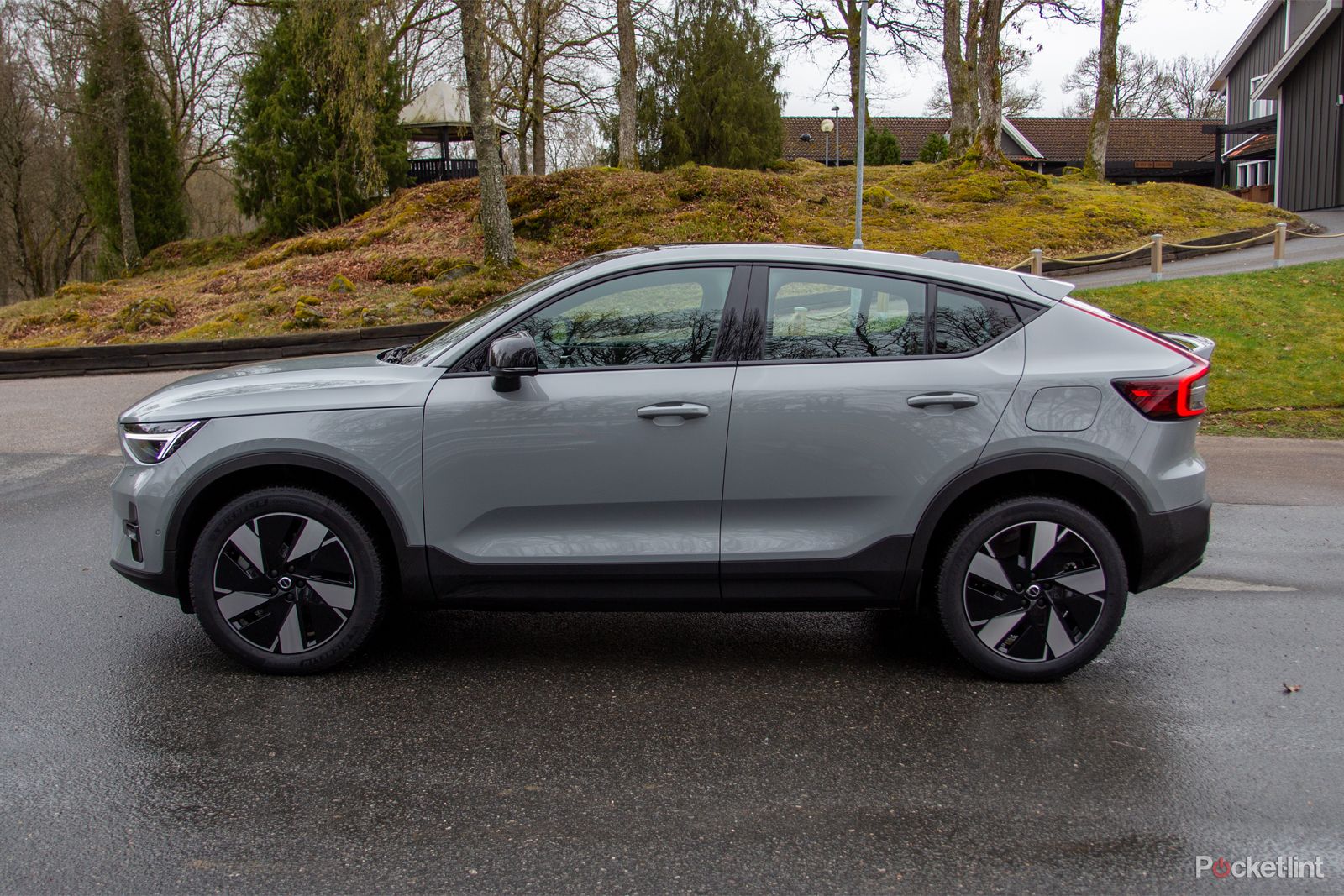Volvo’s path to electrification is well underway, with the company aiming to be purely electric by 2030. That means there won’t be any more launches for combustion models, with a transition from cars designed initially for combustion to vehicles powered by batteries.
The XC40 Recharge is typical of this, having launched originally as an ICE vehicle – and internal combustion engine for anyone unfamiliar with the lingo – before the Recharge badge was applied to a pure electric model. The Volvo C40 Recharge is slightly different: despite being a variant of the XC40, it never launched with a combustion engine; it launched as electric only – and remains so. In many ways, it’s Volvo’s first purely electric vehicle before we get to the imminent Volvo EX30 and the long-teased Volvo EX90.
Volvo/ Pocket-lint
Volvo C40 Recharge
The Volvo C40 Recharge offers all the advantages of the XC40 Recharge but with a dropped roofline for a slightly sportier look. It’s more unique on the road, too, but the slight lift in price over its almost twin sibling in the XC40 might be what deters buyers. Still, great clean design, a comfortable ride and great connectivity options remain attractive, but segment competition is fierce.
- Great Google infotainment system
- Smooth and fuss-free drive
- Really comfortable seats
- More expensive than XC40 Recharge
- It’s all a bit safe in design
Design and build
Pocket-lint
While the Volvo XC40 is a familiar sight on the roads – thanks partly to having launched as a conventional SUV alongside the electric Recharge version – the C40 Recharge is less common. From the B pillar forward (that’s behind the front doors,) this car is essentially the same as the XC40. It sits on the same platform and has much the same looks.
The difference comes around the rear of the C40 Recharge, with Volvo opting for a dropping coupé-like roofline for sleeker and sportier looks than the XC40 Recharge sibling. It’s a move we’ve seen from brands like VW, Audi and Skoda, which all have rivalling models offering two body styles, much as is seen here. Just take a look at the VW ID.5 or Skoda Enyaq IV Coupé, for example.
Pocket-lint
While that dropping roofline makes for a different look on the road, there’s one big drawback. The rear window visibility is squeezed, with the aerodynamic mouldings around the top of the rear window obscuring much of the view. It also means the rear of the C40 Recharge feels less spacious and airy than the XC40 Recharge. That might not be a problem for those in the front seat (ignoring the diminished rear visibility on the road), but if loading up with kids and bags is what you want from your SUV, then the XC40 Recharge will likely be more convenient.
The car carries distinctive Volvo looks, however, strong lines with a boxy appearance, making this compact SUV look a little more rugged than some rivals, but some may be attracted to the fact that it’s a little less common than the XC40 sibling.
Pocket-lint
There’s 404 litres of loading space in the rear, compared to 419 litres in the XC40. Folding down the rear seats will expand that, but the XC40 is larger again. There’s space in the front too, although this is better used for things like charging cables.
There are three trim levels – Core, Plus and Ultimate, each with differing equipment levels – with single or twin motor options for each, so there’s no shortage of options to explore. One important change that came with the 2023 update for the C40 Recharge is the shift to rear-wheel drive for the single-motor version, which Volvo says is designed to make it more efficient.
A comfortable interior
The interior of the C40 Recharge is essentially the same as the XC40 Recharge. Volvo’s message is increasingly about sustainability, so there’s a leaning towards recycled and managed materials, but still a fairly heavy use of harder plastics. That might make them easier to recover when the car reaches the end of its life, but at the same time, it isn’t the most premium of car interiors you’ll find at this price point. There are also plastic panels on the dash, which look a little cheap.
Pocket-lint
From the front seat, there’s plenty of space and plenty of adjustability, with minimal buttons on the interior, the focus instead being on the central display. This display and interior design was introduced in 2015 with the launch of the XC90 and looked at through a contemporary lens; it can’t compete with the likes of the Ford Mustang Mach-E with its huge internal display or the Hyundai Ioniq 5 with its sweeping screens. It now all feels a little small, although the overall minimalist aesthetic is something we’re seeing in other cars.
It’s easy enough to get to features you want, but that’s the important thing in this mid-life update for the C40 Recharge. It’s all still functional if not now being cutting-edge. The comfort and quality of the seats is still impressive, however, offering plenty of adjustability, with enough room front and rear to carry adult passengers in relative comfort – and plenty of knee space for those in the back.
Pocket-lint
What the Volvo C40 Recharge is really about is giving people a Volvo. This car isn’t trying to stand out or move the brand forward; it’s very much working with what Volvo drivers expect. With that said, it’s quiet and refined, a nice play to be, but it’s not the sort of interior that will get people talking.
The technology loadout
One of the things that Volvo likes to talk about, however, is the tech. It was one of the early manufacturers to throw in its lot with Google, basing the interior system on Google’s automotive platform, so there’s native access to Google apps and services. This means it’s familiar, with Google Maps in place, perhaps removing the need always to plug in your phone to get to a modern system.
But don’t fall into the trap of thinking that is only about Android Automotive: it isn’t. It’s just as happy to accommodate your Apple CarPlay when you connect your iPhone. The question is whether you’ll want to do that, given that you can run apps like Waze natively on the built-in system.
This central display governs most of the interaction, with buttons only offering basic demist and a play/pause and track skip option, with climate controls retained within the touch interface itself.
There’s no start button now; you just get in the car, and it’s ready to go, which follows a line of thinking that Tesla is pursuing: remove buttons you don’t need. It’s just a shame that the start button is now a blank space because the interior panel is the same as it was before. So, it’s a technological advancement that the design doesn’t quite keep up with.
Much of the action takes place on the 9-inch central display, and the user interface is simple to use; users of Android systems will probably welcome the familiarity, but it now feels a little small. It’s supported by a 12-inch digital driver display that clearly shows all the necessary information.
Pocket-lint
The standard sound system gives you eight speakers and a 250W output, but the Harman Kardon option bumps this to 13 speakers and 600, which is impressive. If you want to take advantage of that native Spotify app and love your music, then it’s worth the upgrade.
Battery, range and performance
One of the interesting things about the Volvo C40 Recharge is that there are no driving modes. Many cars offer some sort of eco mode, something for normal driving and perhaps a sports mode. But Volvo just wants you to get in and drive without thinking about any of that stuff. But there is a one-pedal driving mode that’s worth seeking out in the menus, as this will make your daily driving simpler, maximising regen when you lift off so you don’t need to stamp on the brakes as often.
Pocket-lint
I found the one-pedal driving model to make for a smooth drive, the high-riding SUV giving you a domineering position on the road for great visibility, except for the back window, of course. Sitting high does increase the sensation of roll as you slosh around the seats a little when cornering at pace, but for most drivers, that’s unlikely to be a problem. The single motor model has a 69kWh battery (66kWh usable, with a 175kW motor driving the rear wheels. That’s 238hp, which will give you a 0-62 time of 7.3 seconds. The official cited range is 302 miles; the average we took from the car during test driving (albeit on clear country roads at restrained speeds) was 3.3 miles per kWh.
Pocket-lint
The AWD model gets an 82kWh battery (79kWh usable) but sees a jump to 300kW for 408hp. That sees a 0-62 time of 4.7 seconds, which is seriously quick and probably faster than most people will need. There’s also a pretty big jump in price for the AWD model, which again might deter some buyers. The larger battery capacity also means a longer cited range of 342 miles – which you won’t get near if you take full advantage of that acceleration. There’s support for 150kW charging.
There’s a sense of competence from the Volvo C40 Recharge, but there’s little difference between this as the XC40 Recharge and the switch from front to rear motor on the single motor option doesn’t make a huge difference to the driving experience, even if there is a slightly increase in efficiency compared to the previous version of the C40 Recharge.
Verdict
There’s a lot going for the Volvo C40 Recharge, but there are also a few points against it. The satisfying driving experience has plenty of practical quirks with that high-riding position and space in the back for passengers. Combine that with a tech loadout that’s not advanced much in the past couple of years but is still well connected, and there’s little to complain about.
But the price is a little higher than the XC40 Recharge that’s basically the same car, but with a little more storage space and with looks that are a mite more conventional. But there are more XC40’s on the road, so if you’re after something that’s perhaps a little more sporty in looks and slightly less common, then the C40 Recharge is worth your time.
Trending Products

Cooler Master MasterBox Q300L Micro-ATX Tower with Magnetic Design Dust Filter, Transparent Acrylic Side Panel, Adjustable I/O & Fully Ventilated Airflow, Black (MCB-Q300L-KANN-S00)

ASUS TUF Gaming GT301 ZAKU II Edition ATX mid-Tower Compact case with Tempered Glass Side Panel, Honeycomb Front Panel, 120mm Aura Addressable RGB Fan, Headphone Hanger,360mm Radiator, Gundam Edition

ASUS TUF Gaming GT501 Mid-Tower Computer Case for up to EATX Motherboards with USB 3.0 Front Panel Cases GT501/GRY/WITH Handle

be quiet! Pure Base 500DX ATX Mid Tower PC case | ARGB | 3 Pre-Installed Pure Wings 2 Fans | Tempered Glass Window | Black | BGW37

ASUS ROG Strix Helios GX601 White Edition RGB Mid-Tower Computer Case for ATX/EATX Motherboards with tempered glass, aluminum frame, GPU braces, 420mm radiator support and Aura Sync


